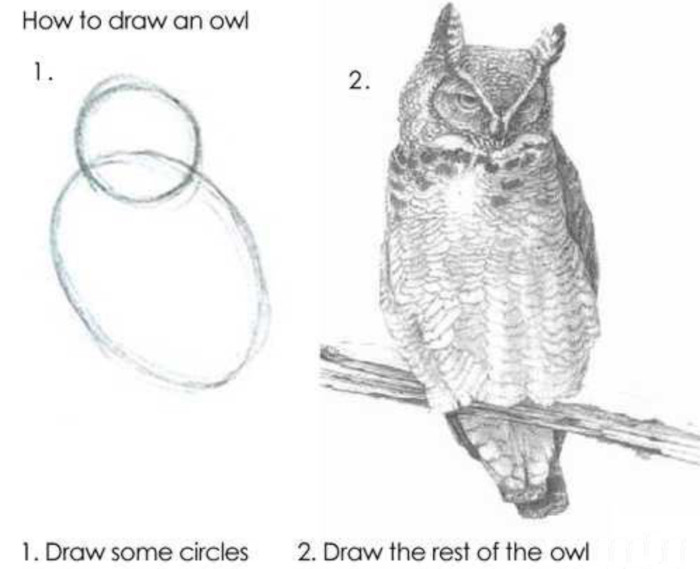Let’s face it: blogging for SEO isn’t easy. Unfortunately, if you want to get found online for important keywords, it’s something you’ll have to do. You’ve got a great team. You’ve built a top-notch website. Maybe you’ve even created an ideal content strategy. You’re doing everything right.
But, what if you’re just not adept at writing blogs?
As with any skill, it takes years to get good at writing. And, when it comes to search engine optimization, it’s even more difficult. Finding new, interesting ways to discuss the same topics can be a real challenge. But, over the years, our writers have developed some tricks to make the process easier.
Our SEO experts have written hundreds of blogs per month. Juggling keyword density, internal linking, and post metadata, they’ve worked to streamline the process. We’ve developed a foolproof method to create fast, effective blog posts. Today, we’re going to share that method with you. We hope this will take the sting out of blog writing and help to get your website on the first page of Google.
Plot your keywords before blogging for SEO
Before you write a single word, you need to look closely at the keywords you’re hoping to rank for. If you’ve done your homework, you’ve already created a spreadsheet that outlines your content strategy. And, if you’re an overachiever, you might have even planned blog posts for the next two to three months. But, if you haven’t done either of those things, don’t fret: choosing keywords is easy!

A spreadsheet depicting upcoming blog posts, their keywords, and their priorities.
When picking keywords for your post, try to narrow your choices down to one primary keyword and two or three secondary keywords.
Some easy tips to follow when planning keywords
-
- When choosing a primary keyword, think of it conversationally. Your primary keyword should relate to one of your company’s core offerings. But, it should also sound natural when used in a sentence.
- Your post needs a single, central topic. Your secondary keywords should be subtle variations of your primary keyword. Don’t spread your post’s focus too thin by writing about unrelated keywords.
- You have a better chance of ranking for extremely specific keywords. Keywords with a narrow focus perform much better than general keywords. Called ‘long-tail keywords,’ they correlate more directly to what people are searching for.
- If all else fails, lean on your website’s data. You can always examine your site’s Search Console for keyword ideas. Look at the search terms that are driving traffic to your site and, if possible, focus on keywords with a lot of impressions.
Create a title that includes your primary keyword
Now that you’ve chosen a keyword, you should have a clear idea of your post’s central topic. Your next step should be to come up with a title that incorporates that keyword. In most cases, you should try to put your keyword at the start of your blog post’s title. But, if this isn’t possible, don’t worry too much about it. Instead, focus on making your title sound natural and appealing to search engine users.
A good title will address a central question related to your keyword. For example, if your keyword is ‘growing tomatoes,’ your title may be, ‘5 Tips for Better Results When Growing Tomatoes.’ This title is appealing to searchers because it answers the question, ‘How do I grow better tomatoes?’

Three blog post titles with their primary keywords outlined in red.
A few more examples of well-written blog titles
-
- ‘How to Eat Healthy Foods on a Tight Budget’
- ‘Hiring a General Contractor in Kalamazoo is Easy’
- ‘5 Tips to Ensure a Successful Residential Painting Project’
- ‘Make Money at Home With Your Etsy Store’
- ‘Do You Need to Get Rid of Garden Pests?’
Generate secondary headings to boost your SEO
Secondary headings, like the one above this paragraph, help to break up your content. In addition to making your post easier to read, secondary headings make blogging for SEO a whole lot easier. By splitting your content into small sections, you can focus on writing shorter, more manageable chunks of content.
Often called H2 tags, you can think of the sections that these headings create as mini-blogs. It’s much easier to write a series of short, 200-word blurbs than it is to write a sprawling, 3,000-word post. Best of all, structuring your content like this is a great way to improve the SEO value of your post.
When organizing these sections, try to fit your post’s primary keyword into at least 20% of your secondary headings. For the remaining headings, you can use your keyword variations if they fit. But, don’t force keywords into your headings, as search engines will penalize you for ‘keyword stuffing’ or stilted writing that sounds unnatural.
Blogging for SEO is amplified by internal links
Internal links are links in your blog post that point to other pages on your website. In most cases, you’ll want to direct readers to pages that contain more relevant content. At this stage, you should work out where you can insert these links. For each secondary heading, find one other page – or blog post – on your website that it could logically link to. You don’t need to create these links just yet. Instead, simply make a note of where they will be placed in your finished content.
When you do create your internal links, don’t make links out of text that exactly matches your primary keyword. So, for a post like this one where the keyword is ‘blogging for SEO,’ we don’t want to create any links from that text. Instead, the best SEO blogs make links out of similar phrases.
Examples of good keyword iterations for internal links
-
- In a blog post with ‘best pizza’ as its primary keyword, the phrase ‘gourmet pizza’ could link to a menu page that details your restaurant’s specialty pizzas.
- If your post is using ‘Kalamazoo website design’ as its keyword, you could link the phrase ‘quality web design in the Kalamazoo area’ to a page that describes your company’s service area.
- A post about ‘better gas mileage’ for all vehicles could link the phrase ‘improve your truck’s mpg’ to another blog post that focuses specifically on trucks.
- In a post using ‘men’s dress shoes’ as its main keyword, you could create a link from the phrase ‘a selection of dress shoes for men of all ages’ to a product category that lists all of your men’s dress shoes.

Internal links are a great way to move traffic through your website and improve SEO.
Use your primary keyword in your first sentence
Alright, so you’ve got your structure built: a primary keyword, a title, some secondary headings, and a few internal links. It’s time to write your first sentence. Your opening sentence should be short, impactful, and it should contain your primary keyword.
While you’re crafting your first sentence, start thinking about your post’s introduction. Are you going to create a sense of urgency? Will you focus on establishing yourself as an expert? How do you plan to segue into your secondary headings?
More than anything, your introduction needs to captivate readers. While search engines want to see your main keyword in your post’s opening sentence, they also want to see that your content can engage readers. They want to see that your post convinces visitors to stick around. Don’t waste time with fluff: get to the meat of your subject quickly.
Map your keyword frequency to your subheadings
When blogging for SEO, your content needs to flow naturally. If you’re only writing for search engines, you’ve doomed yourself to failure. Google wants to deliver results that answer searchers’ questions. While there are a lot of metrics it uses to determine if this is the case, readability and ‘dwell time’ are two of the major components. And just what is dwell time? It’s the amount of time visitors spend on your page. Of course, the best way to achieve a healthy dwell time is to provide well-written, readable content.
But, having said that, you should aim to use your primary keyword once every 200 words. With this frequency, you appease the demands of search engines without the risk of coming off as unnatural.

Plotting your keywords while blogging for SEO makes writing your post much easier.
So, at this stage, you should revisit all of your subheadings and – where possible – plot out where you will include your keywords. In a lot of cases, it’s easier to write a full sentence that includes the keyword. Not only does this mark where your keyword will be, it gives you a nice writing prompt for when you return to the section later.
Use your expertise to fill in the blanks
We promise: this isn’t a ‘draw the rest of the owl’ moment.

The final step in blogging for SEO seems overly simple: just fill in the blanks.
With the entirety of your structure in place, all that’s left is to fill in the blanks. By now, you should have three to eight sections that require about two hundred words apiece. In those sections, you should have sentences that utilize your keywords and a few ideas for internal links.
Now, all you need to do is use your expertise to connect the dots. The beauty of this structure is that you can jump from section to section as inspiration strikes. If you don’t have any ideas for one section, jump to the next. Along the way, you can use your plotted keywords as a way to jumpstart your creativity. As you go, don’t be afraid to make adjustments or change your structure. The end goal of this is to produce a readable, informative blog post. As long as that’s the result, there are no wrong methods!
Still not certain about blogging for SEO?
At Creative Marketing Group, our team has created SEO-focused blogs for hundreds of Kalamazoo websites. By leveraging your industry experience and performing in-depth research, we can craft compelling blogs that aggressively position you on Google’s search results.
We’ve written for equipment manufacturers, local pizza joints, clothing boutiques, roofing contractors, and more. With over twenty years of experience writing for a diverse range of businesses, we’ve never encountered a company that we couldn’t improve with custom, well-written blog articles.
So, if you’ve been stressing about blogging for SEO, we can help. We know it’s tough to find the time to blog. We understand that blog writing isn’t for everyone. But, if you want to improve your website’s rankings and attract more customers, it’s a necessary evil. Reach out to us today to discuss how our ongoing search engine optimization plans can drive visitors to your website with fresh, engaging content.








